
In a world that is rapidly advancing with technology, nobody should be left behind including those with autism. The diverse abilities that number within the autism spectrum can pose challenges, yet they also paint a colorful tone of human expression and capacity. These unique voices, however, may require alternative communication methods and social interaction pathways. Assistive technologies have broadened the horizons and promise hope in addressing the cognitive, social, and behavioral characteristics associated with autism. This comprehensive guide takes you through the realm of assistive technologies, sharing insights on what they are, their categories, potential applications, and how to choose the right one. Moreover, it explores effective usage practices and shares heartwarming success stories borne of these technologies.
Understanding Autism and the Need for Assistive Technology
Embracing Assistive Technology: Unlocking Communication for Children with Autism
Exploring the world of autism can often feel like embarking on an adventure full of puzzles and surprises. Among these surprising elements, assistive technology plays a prominent role in transforming the lives of children diagnosed with autism. Embracing assistive technology not only provides the tools for communication and learning but truly broadens their world, offering a lifeline to their hopes and dreams.
The crux of autism is not about intellectual capacity, but rather one of communication and social interaction. Sometimes, autism might cause our little ones to retreat quietly into their own world, making it difficult for them to vocalize their thoughts and feelings in the way we typically do. That is where assistive technology steps in, providing an alternative yet effective means of communication.
Ranging from simple picture boards to advanced electronic devices, this communication toolbox is a godsend for our young ones navigating autism. Their use can be customized to suit the unique abilities and developmental stage of each child.
Let’s take, for example, the Picture Exchange Communication System (PECS). This form of assistive technology starts at its most basic with physical cards, each displaying a different picture representing everyday needs and emotions. Our child will then use these pictures to communicate requests or share feelings. It’s simple, yet powerfully effective.
Voice Output Communication Aids (VOCAs) are a more advanced form of assistive technology. These devices use pre-recorded or digitized speech to help children with autism communicate, with some even supporting text-to-speech conversion.
But the benefits of assistive technology go even beyond communication. Interactive apps and games can create engaging and fun learning environments, honing social skills and encouraging positive behavior. Technology can be an essential companion in teaching children with autism critical life skills like handwashing, dressing, or even navigating public transportation.
It’s also worth noting that a decrease in frustration often comes with the increase in effective communication, leading to a potential decrease in problematic behaviors. This is a win-win situation for both children with autism and their families, everyone reaps the benefits of having a smoother, more harmonious environment.
Yet, navigating this world of assistive technology may seem daunting at first, and that’s okay. It’s always wise to consult with an experienced professional such as a speech-language pathologist, who can guide the journey to finding the most suitable tools for our child. Remember, every child is unique, and the key to success lies in finding the ‘right’ technology that fits them like a glove.
In conclusion, the importance of assistive technology for children with autism cannot be overstated. It gives our children a voice, and with that voice comes the ability to understand and be understood. Connecting with the world around them becomes easier and in many ways, a whole lot richer. So let’s embrace assistive technology and applaud its role in inclusivity, evoking boundless possibilities for our children’s futures. In the grand adventure of life, every child, regardless of their abilities, deserves the chance to shine brightly.
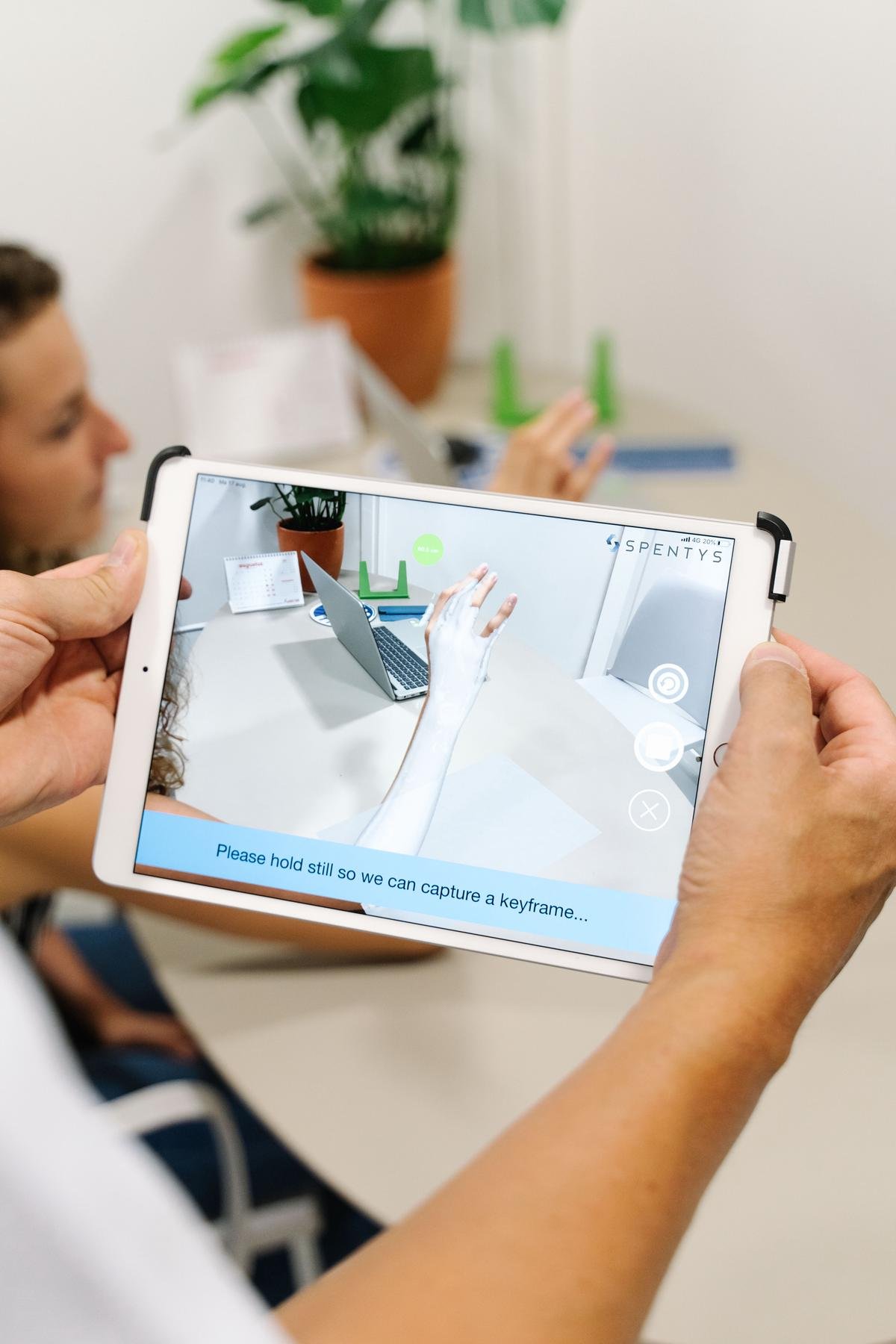
Photo by tomspentys on Unsplash
Categories of Assistive Technology for Autism
When speaking about assistive technologies for autism, the focus understandably lies primarily on communication aids given how profoundly autism can affect a child’s ability to interact with their surroundings. It would be remiss, however, to overlook the vast array of other technological solutions whose innovative applications are making significant strides in the domain of autism therapy. From sensory aids to adaptive learning tools, to digital organizers, the gamut of assistive tools available today truly exemplifies the unique integration of technology and compassion.
Sensory tools, for instance, can play a transformative role for children on the autism spectrum who are often prone to sensory overload. Consider weighted blankets, with their therapeutic deep pressure technology, or noise-canceling headphones that provide a cocoon of quiet in bustling environments. They act as buffers against sensory overload, offering children a safe haven in a world that can sometimes be overwhelming.
Next, there are digital organizers such as visual scheduling apps that offer structure and predictability, two highly essential components for easing daily transitions for children with autism. A snapshot of this could include apps showcasing visually-coded calendars that help prepare these children for upcoming events, transitions or disruptions in routine, empowering them with a familiar tool to manage change.
Technology also promises exciting advancements in the field of adaptive learning. One notable example is virtual reality (VR) technology. VR can create realistic, immersive environments where children with autism can practice social interaction and rehearse responses to various scenarios in a safe and controlled space. Though still in its infancy, the potential benefit of VR in addressing the social skills gap in autism is undoubtedly vast.
Additionally, augmentative and alternative communication (AAC) devices are crucial tools that allow children with limited verbal communication to express themselves. These range from simple PECS (Picture Exchange Communication System) boards which use images to symbolize words, to high-tech devices that use eye-tracking to select options from a digital display. This type of technology can be fundamental to developing communication skills for children with autism.
Assistive technology tools, however, hardly exist in isolation. On the contrary, they function best as part of an inclusive strategy that involves educators, therapists, and most importantly, the family. To truly harness the potential of these technological aids, a concerted effort involving consistent practice at home coupled with professional input is vital.
Finally, while the technological landscape for autism continues to evolve with leaps and bounds, let’s remember to approach it with a sense of balance. Technology, undoubtedly, is significant, but it’s always the human touch: the warmth of shared laughter, the tenderness of a goodnight hug, the soothing lullaby at bedtime, that form the cornerstone of a child’s world, autism or not. So, go ahead and explore the spectrum of assistive technology, but don’t forget to punctuate it with kisses on the forehead, words of praise, and a whole lot of love.
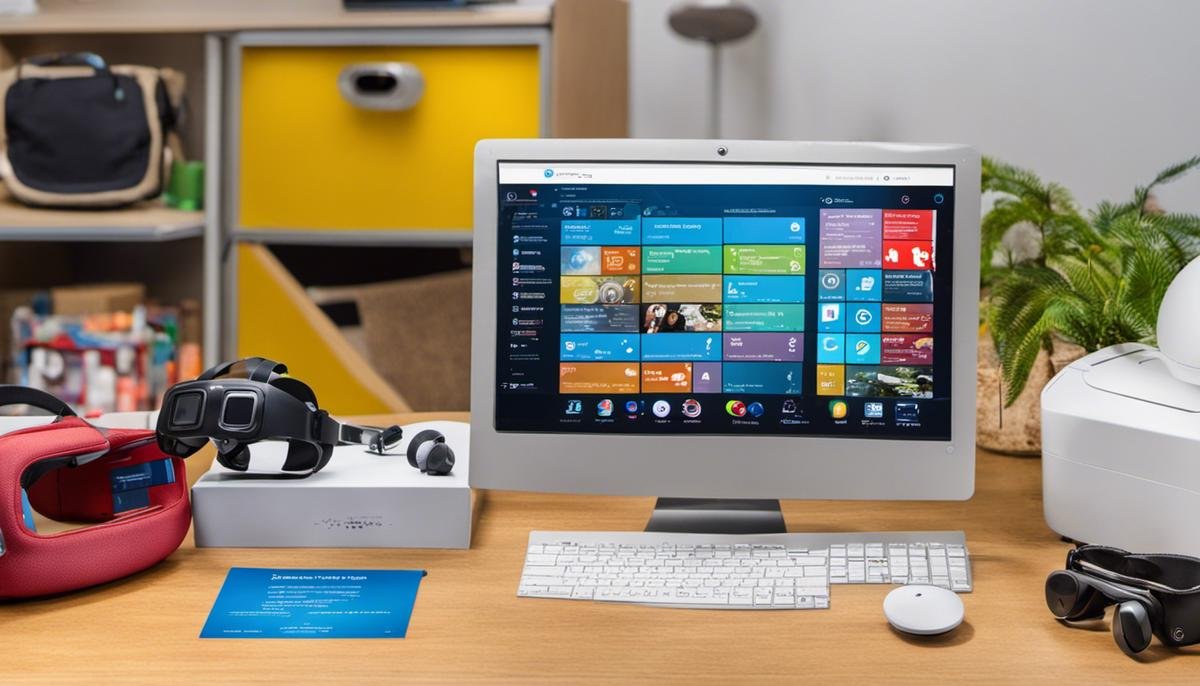
Features and Applications of Autism Assistive Technologies
Autism assistive technologies are inherent game-changers, providing unique features that tap into the distinct needs of children with autism. Let’s delve into what these unique features are and how they can contribute to the learning and communication processes of children on the autism spectrum.
Communication aids employ a variety of features to respond to an essential need for children with autism – expressing themselves. Some create dynamic display boards, which can accommodate a vast array of symbols, and others use text-to-speech technology. With this, the child can form a sentence using symbols or text, and the device verbalizes the sentence. This gives children greater control over their communication, helping them express their feelings, needs, and thoughts more clearly.
Meanwhile, sensory tools help manage sensory overload – a common challenge with children with autism. For instance, noise-canceling headphones can filter out overwhelming noise making environments more manageable. Similarly, ‘sensory fidget toys’ provide a tactile experience that can distract and soothe during periods of sensory overload.
In the pursuit of organization and structure, digital organizers and visual scheduling apps are proving immensely useful. These tools offer visual schedules which can help children follow routines or complete tasks. The schedules use a mix of icons, alarms, and text, aiding children in understanding and predicting daily events, ultimately reducing stress and anxiety.
When it comes to learning, adaptive tools like virtual reality technology are pushing boundaries. With VR, immersive and interactive experiences can be created, allowing children to practice social scenarios or learn about complex topics in a more engaging way. It appeals to visual learners, a common trait among children with autism.
Among the star players in autism assistive technology are Augmentative and Alternative Communication (AAC) devices. These devices incorporate pictures, text, sounds, symbols, and speech output to supplement or replace speech. This accessibility option has revolutionized the way many children with autism interact with the world, fostering independence and self-confidence.
Lastly
e, an important aspect to remember is the role of an inclusive strategy. Regardless of how technologically advanced a tool is, the involvement of educators, therapists, and families is crucial. The combined effort of these pillars in a child’s life ensuring a more holistic and supportive approach.
Beyond technology, let’s always remember the irreplaceable warmth of human love and connection. As parents, educators, or friends, our understanding and patience play an immeasurable role in creating a supportive environment. Yes, we have incredible technology at our fingertips. Still, it’s your involvement, acceptance, and love that truly become the greatest tool at your disposal.
To conclude, each autism assistive technology brings its unique set of features to the table, catering to the diverse needs of children with autism. They not only supplement gaps but also shine a light on the strength within each child, allowing them to unlock the potential that always existed within them.
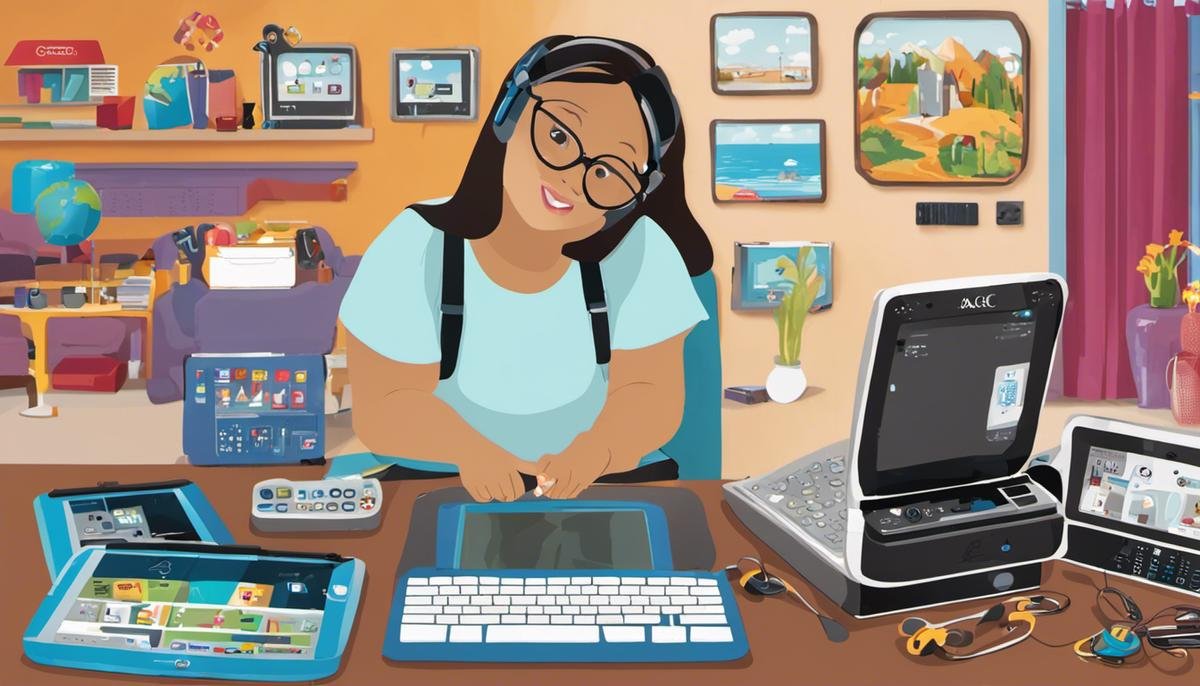
Choosing the Right Assistive Technology
Choosing the right assistive technology for a child with autism is not a one-size-fits-all endeavor. It’s a process, and one that should be approached with as much patience, understanding, and empathy as with any other aspect of raising a child. Just as every child is unique, so too are their needs, interests, and capabilities.
Remember that the end goal is to empower the child to express themselves, understand their surroundings, and learn at their own pace. That said, understanding the features of the various aids available may guide your decision effectively.
Communication aids, for instance, come with a range of features; there are speech generating devices that convert text to spoken words to assist with verbal communication. Others communicate through picture symbols to create a visual language suited for those who think in images. In line with this, considering your child’s way of thinking and communicating is key.
Sensory tools are designed to help manage sensory overload. These include things like weighted blankets and vests, noise-cancelling headphones, and chewable jewelry, all designed to soothe, ground and help the child cope with overwhelming sensory environments. Again, understanding the child’s sensory needs is crucial when selecting from these options.
One might also consider digital organizers and visual scheduling apps. These can particularly benefit those children who thrive on routine and predictability. Digital organizers can keep track of assignments, while visual scheduling apps can help the child know what’s coming next in their day, providing comfort through predictability.
Stepping into the world of adaptive learning tools, virtual reality is creating cutting-edge learning experiences. These VR technologies offer immersive experiences, opening doors to virtual field trips, social situation simulations and more. Being largely visual and interactive, these technologies can be particularly impactful for those with autism.
Augmentative and Alternative Communication (AAC) devices play a significant role in bridging communication gaps. They range from low-tech solutions like communication boards to high-tech digital devices. These tools should be chosen based on the child’s current communication abilities and potential for growth.
Selecting the right assistive app, device, or gadget is, however, only half the battle won. The other half entails creating an inclusive strategy where educators and therapists work together with the family. This collaborative effort can create an enriching learning environment where the child can make the most of the chosen assistive technology.
Lastly, remember no tool or app can replace the importance of human connectivity. The warm smile, the encouraging nod, the gentle word – these ‘people skills’ are imperative. Balancing technology with this intimacy delivers the real magic – it’s where we see the most tremendous strides in capability and confidence.
Autism assistive technologies are not stature leveling agents, but they are bridges that span the gap between limitations and capabilities. They are tools that cater to every child’s uniqueness and aids to unlock untapped potential. As you choose the right tools for your child, remember that while the technology matters, your love, understanding, and patience are the ultimate game-changers.
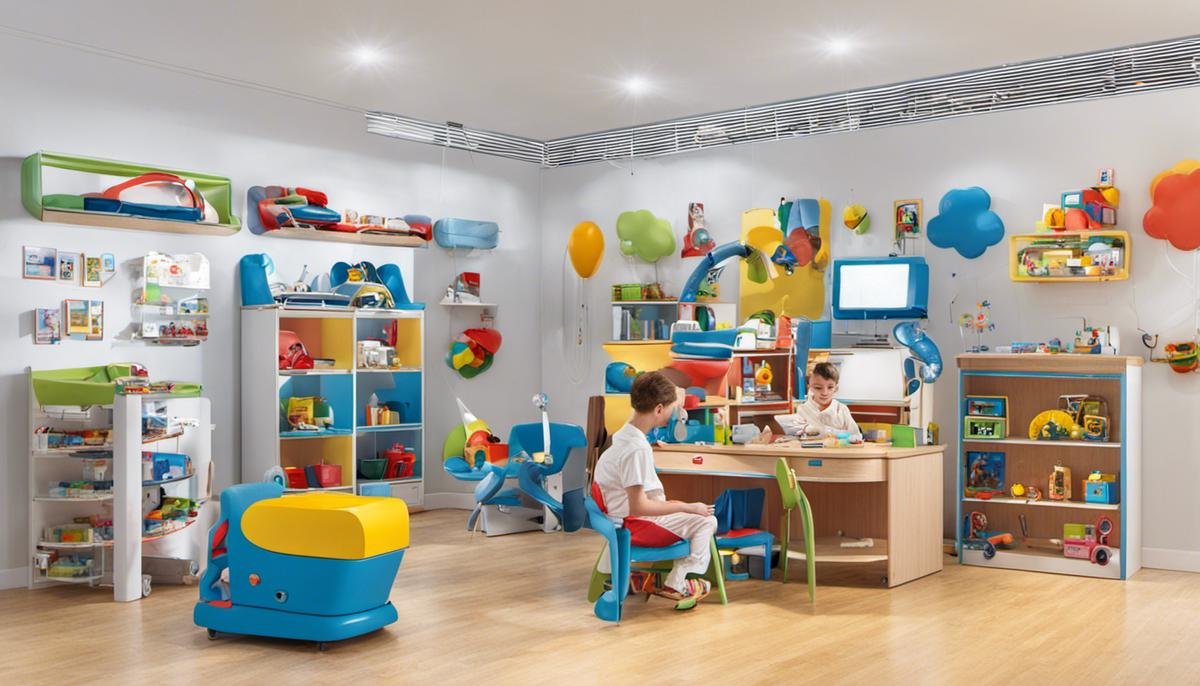
Effective Usage of Assistive Technologies
Optimizing The Use of Chosen Assistive Technology: A Comprehensive Guide for Parents and Educators
Navigating the world of special education, especially when it comes to children diagnosed with autism, may sometimes seem like a daunting task. Technology has been a game-changer, opening up opportunities and possibilities beyond measure. We’ve covered how assistive technology can act as a beacon of hope, bridging gaps and aiding interaction. Now, let’s delve deeper into how parents and educators can leverage this impactful tool to its full potential.
Proper Training and Implementation:
Assuredly, owning a range of assistive technologies is way different than optimally using them. It is essential for both parents and educators to seek proper training to understand each tool’s functions and limitations deeply. This could mean relying on user guides, attending workshops, engaging in webinars, or requesting hands-on training from the product company. When operated correctly, assistive technology can unveil a new world of progress for children with autism.
Routine and Familiarity:
Children with autism usually respond positively to a routine. Incorporating the use of assistive technology into their daily activities provides them with the comfort of predictability, which significantly enhances engagement and learning. Choose a part of their routine – be it a learning session or playtime, then, gradually introduce the technology in those sections.
Individualized Approach:
Each child is unique, with their own set of challenges and strengths. A ‘one-size-fits-all’ approach may not work when it comes to optimizing the use of assistive technology. Individualizing and tailoring strategies based on a child’s abilities can yield remarkable results. Parents and educators must spend time figuring out what works and what doesn’t for each individual child.
Embrace a Multidisciplinary Approach:
Education, therapy, and home environment should ideally create a cohesive unit that fosters growth and development. Collaboration among educators, therapists, parents, and even the children can lead to setting realistic goals and successfully achieving them. Assistive technologies should be integrated across all these settings to enhance their effectiveness.
Remember, Balance is Key:
As much as technology may offer incredible learning opportunities, over-reliance on it is not ideal. Active human interaction is immensely valuable and irreplaceable for children with autism. It is vital to strike a balance between leveraging assistive technology aids and nurturing personal interactions filled with love and empathy.
Accessibility Enhancements:
Remember to make full use of embedded accessibility features. Most devices come equipped with different interfaces, settings, or tools designed to make them more user-friendly and effective. Playing around with these settings often equips users to better customize the user experience for each child’s unique needs.
Patience and Lots of Love:
While assistive technology can be a powerful tool, real progress is often slow, marked with small steps and gradual improvements. Patience is the key here; patience with the child, patience with the technology, and most importantly, patience with oneself. Celebrate every little success and let love be the tool that guides every action and decision.
In the end, the goal should be helping children with autism maximize their full potential and connect better with the world around them. When used thoughtfully and strategically, assistive technology can be a transformative tool.
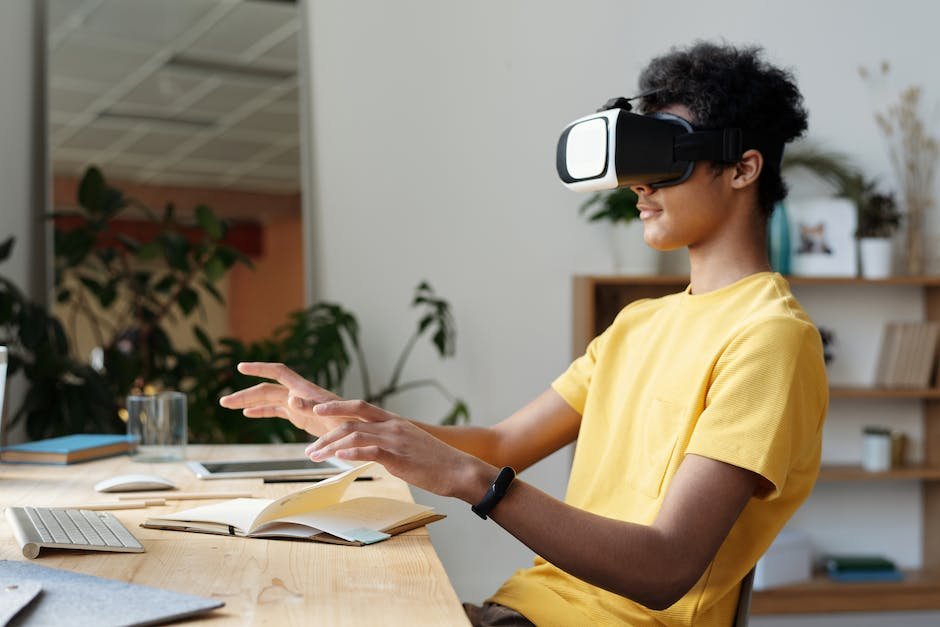
Experiences and Success Stories
Hearing the uplifting tales of children who have made significant strides thanks to assistive technology is a testament to the power of these incredible tools. Let’s explore some of these heartening success stories that focus on children benefiting from autism assistive technology.
One of the standout stories is the tale of Jack, a twelve-year-old boy. Jack has autism spectrum disorder and previously struggled with expressive communication. The introduction of speech-generating devices, a type of Augmentative and Alternative Communication (AAC) device, into Jack’s life changed the game. Jack began to use a popular app, Proloquo2Go, which enabled him to communicate his wants, needs, and thoughts much more efficiently. As his communication skills flourished, so did Jack’s confidence and social interactions.
Next, we have the journey of Lily, a ten-year-old girl with autism who experienced significant difficulty staying organized. Her parents introduced her to a visual scheduling app that became an essential part of her daily life. The app allows Lily to visualize her schedule, understand what comes next, and manage her time efficiently. As a result, her anxiety levels have significantly decreased, and she has developed a heightened sense of autonomy and self-assurance.
Let’s not forget about Amy, an eight-year-old girl with a hypersensitivity to sound, a common sensory condition in children with autism. By utilizing sensory tools like noise-canceling headphones, Amy can now participate in a variety of activities previously challenging due to sound overload. Consequently, Amy has broadened her experiences and formed deeper connections with her peers.
Strikingly impressive is the progress made by Henry, a nine-year-old boy whose fascination with VR technology has assisted his ability to learn new skills. Using VR in conjunction with adaptive learning tools, Henry has been able to immerse himself in real-life scenarios in a safe and controlled environment. This technology has enabled him to learn street-crossing safety, identifying emotions, and practicing social interactions.
Finally, the story of Sam, a young teen with autism, is truly motivational. Sam’s family integrated technology with love and human connection. Using an AAC device, along with continuous support from educators, therapists, and his family, Sam started to express himself accurately. This collective approach ensured that technology use was balanced with human connectivity, encouraging Sam not only to communicate but also to connect meaningfully with those around him.
These success stories underline the potential of assistive technology in reinforcing a sense of independence and confidence among children with autism. Technology is not a cure, but a catalyst for these children to unlock their potential, paving the way towards a more fulfilling life. The beauty lies in this balance – where the high-tech tools meet the high-touch human interactions, forming a harmonious blend of acceptance, inclusion, and compassion.
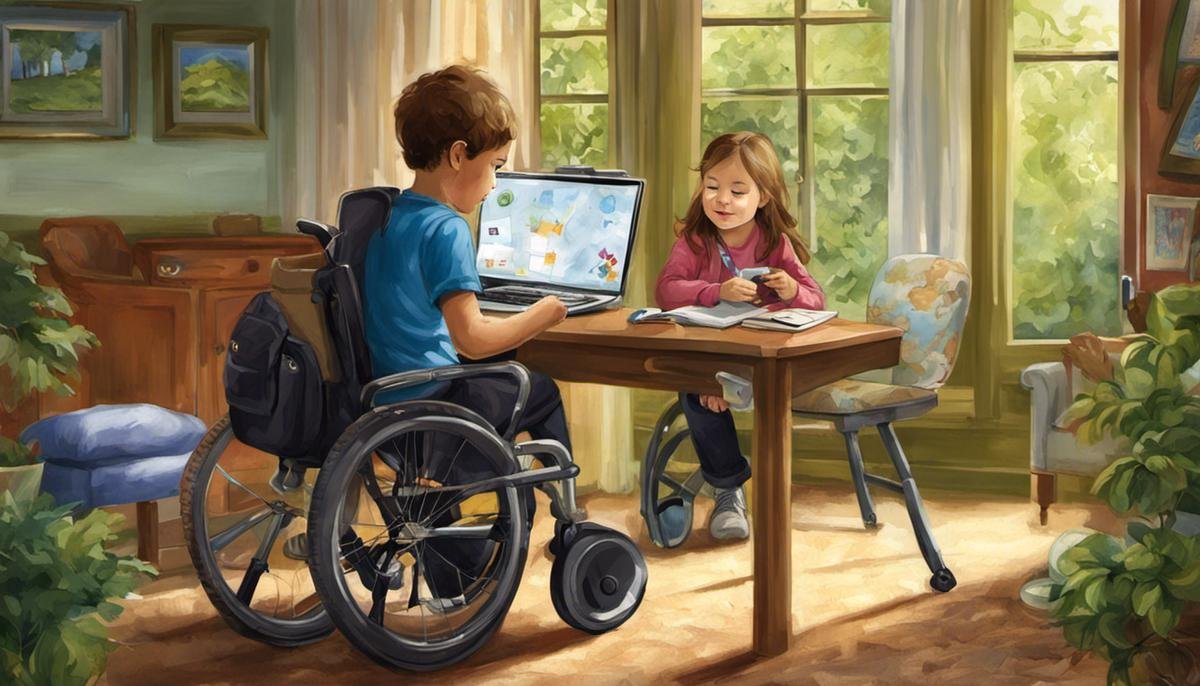
Embarking on the assistive technology journey may seem overwhelming, yet it becomes incredibly rewarding when the right tools click into place, unlocking a world of potential. Assistive technologies for autism are not magic cures, but they are extremely beneficial tools that can make a significant difference in the lives of both the children and their families. From communication aids to educational tools and daily living aids, these technologies help foster skills such as communication, social interaction, and learning abilities. The process of choosing, integrating, and effectively using these technologies requires careful thought, ongoing effort, and even courage. Nevertheless, the shared experiences and uplifting success stories bring a realization of how invaluable these resources can become in overcoming daily challenges and aiding persons with autism to communicate, learn, and engage better in the world around them.




